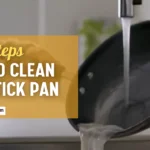Introduction
A dirty vacuum filter can negatively impact your vacuum’s performance. Over time, dust and debris accumulate in the filter, causing it to become clogged. When this happens, airflow is reduced, making it harder for the vacuum to pick up dirt and dust from your floors and carpets.
To avoid these issues and keep your vacuum working at its best, it’s important to clean or replace the filter regularly. The frequency of cleaning or replacement will depend on how often you use your vacuum and how much dirt and debris you typically pick up during each use. In general, most filters should be cleaned or replaced every three months for optimal performance.
Overview of how to clean vacuum cleaner filter
Cleaning your vacuum cleaner filter is an essential task that needs to be done regularly. To clean your vacuum cleaner filter, start by removing it from the machine. Once you’ve removed the filter, tap it gently against a hard surface to remove any loose dirt and debris.
Next, rinse the filter under running water using only mild soap if necessary. Allow it to dry completely before reinserting it back into your vacuum cleaner. A clean filter will help keep your home allergen-free and ensure that your machine works effectively during each use!
10 ways how to clean vacuum cleaner filter
Checking the Filter for Debris Buildup
To check for debris buildup in the filter, first, remove the dustbin or bag from your vacuum cleaner. Then inspect the filter carefully for any visible dirt or debris that may have accumulated on its surface. If there are any signs of blockage or buildup, you will need to clean or replace your filter.
Removing and Emptying the Filter Canister
To remove the filter canister, first, ensure that the vacuum cleaner is unplugged from the power source. Next, locate the release button or clip that secures the canister in place and press it to detach it from the unit. Once you have removed the canister, take it outside or to a trash bin where you can safely dispose of any accumulated dirt and debris by emptying it into a garbage bag.
Washing the Filter with Water
Start by removing the filter from your vacuum and gently tapping it over a trash can to remove any loose debris. Then rinse the filter under running water until all visible dirt has been removed. Once you’ve rinsed off most of the dirt, you’ll want to wash the filter more thoroughly. This can be done by simply soaking it in cool or lukewarm water for about 15 minutes (some experts recommend adding a small amount of mild detergent). After soaking, rinse again until all suds have been removed. Finally, gently squeeze out any excess water and let the filtered air dry completely before reinstalling it in your vacuum cleaner.
Soaking the Filter in a Solution of Water and Detergent
fill a bucket or sink with warm water and add a small amount of mild detergent. Next, place the filter in the solution and let it soak for at least 30 minutes. Use a soft-bristled brush to gently scrub any remaining dirt or debris from the filter before rinsing thoroughly with clean water. Be sure to allow the filter to dry completely before reinserting it into your vacuum cleaner.
Rinsing the Filter Thoroughly to Remove Soap Residue
When cleaning your vacuum filter, rinsing it thoroughly is essential to remove any soap residue. If you don’t do this properly, the remaining soap can attract dirt and dust, making your filter less effective over time. To avoid this problem, rinse the filter under running water until all the suds are gone.
Drying the Filter Completely Before Reinstalling
Once you have cleaned your vacuum filter, it is crucial to dry it thoroughly before reinstalling it. Moisture in the filter can lead to the growth of bacteria and mold, which not only affects your indoor air quality but also reduces the functionality of your vacuum cleaner. To ensure that your filter is 100% dry, leave it out in a warm and dry area for at least 24 hours.
Replacing Disposable Filters with New Ones
To replace disposable filters with new ones, you should first identify which type of filter is used in your vacuum cleaner. Some models use HEPA filters while others use standard paper or cloth filters. Once you have determined which type of filter you need, locate where it is housed within your vacuum and remove the old filter carefully.
Cleaning Foam Filters with a Soft Brush
First, remove the filter from your vacuum cleaner and tap it gently to loosen any loose dirt or debris. Next, use a soft-bristled brush to gently scrub the filter in circular motions. Be sure not to press too hard as this may damage the filter material. Pay close attention to any crevices or corners where dirt may be trapped.
After brushing, rinse the filter with water until all soap residue is removed. Gently squeeze out excess water and allow it to air dry completely before reinstalling it into your vacuum cleaner.
Removing Stubborn Debris with Compressed Air
To start, make sure you are working in a well-ventilated area and that your vacuum is unplugged from any power sources. Take out the filter and give it a quick inspection to see where the problem areas are located. Then, insert the straw attachment into the nozzle of the compressed air can and hold it about an inch away from the filter surface. Use short bursts of air to blow away any visible debris while holding the filter over a trash bin or outside.
Maintaining the Filter Regularly for Optimal Performance
To maintain the filter regularly, start by checking it every few weeks. If you notice that it’s dirty or clogged, remove it from the vacuum and clean it thoroughly with water or a specialized cleaner as per the manufacturer’s instructions.
For bagless vacuums with washable filters, consider replacing them every six months or so for maximum effectiveness. For vacuums with disposable filters, replace them as recommended by your manufacturer or whenever they appear visibly dirty.
Conclusion:
A dirty vacuum filter can significantly affect the performance of your vacuum cleaner. It reduces suction power, shortens the lifespan of your machine, and causes unpleasant odors. It’s important to clean or replace your filter regularly, depending on the type of filter you have and how often you use your vacuum. By doing so, you’ll not only improve the efficiency of your vacuum but also promote better indoor air quality in your home. So, if you haven’t checked your vacuum filter lately, now is the time to do so! Your home and health will thank you for it.



